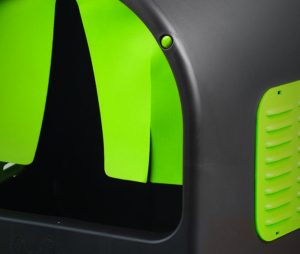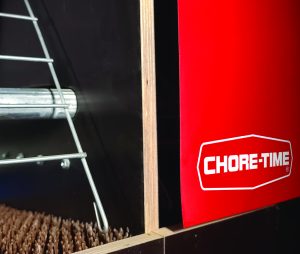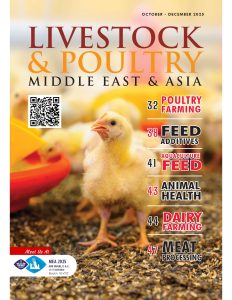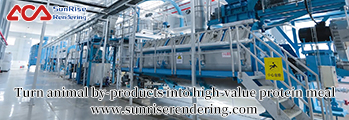Today’s poultry growers can choose from several types of nest construction, including film-faced plywood, plastic and metal. But which delivers the best performance and long-term value? Each material has its own strengths and limitations, and the following information outlines key factors to consider when selecting nests that support the highest productivity and profitability.
Sanitation
Smooth surfaces make plastic and metal nests easy to clean, which appeals to many growers. However, poultry houses are generally washed only after flocks are removed, meaning nests aren’t cleaned frequently. As a result, other properties of the material play a greater role in maintaining overall hygiene.
Wood’s porous structure allows it to absorb some moisture, which might seem like a drawback. Yet research shows the opposite effect. The capillary action in wood draws bacteria below the surface, where it soon dies. By contrast, bacteria linger on the surface of plastic or metal and may persist longer in damp conditions.

This phenomenon has been documented in food safety studies. In a 1994 University of Wisconsin report titled “Cutting Boards and Food Safety,” Dr. Dean Cliver demonstrated that bacteria such as Salmonella and E. coli declined significantly over time on wooden cutting boards, even without cleaning, thanks to the porosity of wood. Follow-up studies at the University of California, Davis, reached similar conclusions that plastic surfaces retained bacteria more readily than wood.
In addition, certain wood species have natural antimicrobial properties that inhibit bacterial growth. Plastic lacks this ability, which can create a better environment for bacteria to live.
Bird Response and Nesting Behavior
The type of material used in nest boxes directly affects bird behavior and nesting consistency, which are key to maximizing the number of Grade A eggs. Wooden nests typically perform best in this regard. Their density and mass provide stability and quietness — qualities birds instinctively prefer. The sound-dampening nature of wood often results in higher nest acceptance rates than either plastic or metal options.
Evidence from Wageningen University in the Netherlands supports this conclusion. The study, “Relative preference for wooden nests affects nesting behavior of broiler breeders,” compared wooden and plastic nests, showing that hens laid more eggs in wooden nests. Camera data further reinforced the findings, also showing a stronger preference for wooden nests, as more birds visibly spent a greater amount of time in them.
Metal nests, being noisier, are the least attractive to birds and experience the worst acceptance. Because the low nest acceptance rate will negatively impact production, metal designs are now seldom used in broiler breeder facilities.

Strength and Longevity
Durability is another strong point for wood. Though growers may worry about rot, this concern is minor since poultry houses are typically pressure-washed less than once a year, minimizing the length of exposure to water. Also, the marine-grade, film-faced plywood used in these types of nests is engineered for moisture exposure and can be easily wiped clean.
Interestingly, the porous structure of wood is a benefit because, even though wood absorbs water, it is also able to dissipate moisture quickly. This durability is evident through the fact that many wooden nests have been in service for over 15 years, while showing minimal wear despite repeated cleaning with disinfectants.
On the contrary, plastic becomes brittle after extended exposure to detergents and high-pressure washing. As a result, plastic nests are more likely to break after years of use. Also, sheet metal options tend to rust over time, contributing to durability concerns.
It’s also important to distinguish between high- and low-quality wooden nests. Premium versions use multiple layers of dense plywood (up to nine layers) for added stability and sound absorption. Lower-cost models with fewer layers may not provide the same durability or performance.
Sustainability
Next, wood’s renewability gives it an environmental edge over plastic and metal. When obtained from certified forests, it represents a sustainable material choice with a smaller ecological footprint.
By contrast, metal and plastic production relies on nonrenewable resources such as fossil fuels and mined minerals, making them less sustainable alternatives.
Cost Efficiency and Investment Value
One negative of wooden nests is they usually carry the highest purchase price. However, as previously highlighted, they often produce the best return on investment through improved bird welfare, higher egg output and longer lifespan.
Metal nests cost less initially but typically reduce profitability due to lower nest use and increased floor eggs.
Final Assessment
The material used for nests has a direct influence on flock comfort, hygiene and long-term return on investment. Film-faced plywood stands out as a balanced choice because it is durable, easy to maintain and supportive of natural bird behavior. Its combination of resilience and comfort contributes to better flock health, greater nest acceptance and improved economic outcomes for poultry operations.
For more information: www.choretime.com




















